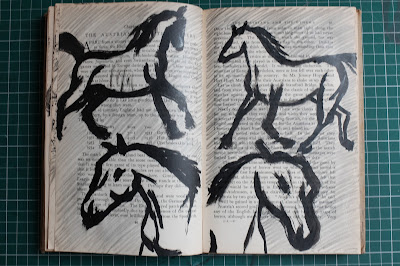Mirror from NewYorker on Vimeo.
- Starts as 2D illustration then becomes 3D and animated, really brings flat image to life
- Dynamic pans and movement of camera to give different perspectives, breaks fourth wall
- mixtures of animating techniques and styles, becomes flat line and shapes after appearing more 'real' and close to life
- Narrative voice over, some words becoming visual, visuals follow narrative
- Changing scenes and time scale and compositions, great variety
Adam Osgood
Spooktacular: An Animated Alphabet from Adam Osgood on Vimeo.
- Same composition throughout, going through alphabet
- movement on each is simple and relevant to each character, bringing illustrations to life and giving them personality beyond the 2D
- quite fast paced, matches background sounds of heartbeat and eerie guitar score
- Tells story of type and character design
The Atlantic
- Simple illustrations with little movement in each aside from entering and exiting
- Main body of animation consists of traditions and moving of assets around screen, very 2D and simple
- Type used to aid narration in parts, brings sound to life in visual form
- Coloured backgrounds used for traditions and to change scenes
- very simple and limited colour palette



















































